 |
A mind is like a parachute. It doesn’t work if it is not open. ~Frank Zappa My best advice to anyone who wants to raise a happy, mentally healthy child is: Keep him or her as far away from a church as you can. |
 |
A mind is like a parachute. It doesn’t work if it is not open. ~Frank Zappa My best advice to anyone who wants to raise a happy, mentally healthy child is: Keep him or her as far away from a church as you can. |
“I don’t even know why I do what I do,….when I do it, it just comes.”
~Sam Cooke (to Bobby Womack)
You Send Me:
–
Crossing Over (documentary):
The Beatles released Sgt Peppers Lonely Hearts Club Band 47 years ago – 1967 (Read more)Sgt. Pepper’s Lonely Hearts Club Band (often shortened to Sgt. Pepper) is the eighth studio album by The Beatles, released on 1 June 1967 on the Parlophone label and produced by George Martin. The album is widely regarded as one of the greatest of all time, and has since been recognised as one of the most important albums in the history of popular music, including songs such as “Lucy in the Sky with Diamonds” and “A Day in the Life”. Recorded over a 129-day period beginning in December 1966, Sgt. Pepper saw the band developing the production techniques of their previous album, Revolver. Martin’s innovative and lavish production included the orchestra usage and hired musicians ordered by the band. Genres such as music hall, rock and roll, pop rock, and traditional Indian music are covered. The album cover art, by English pop artist Peter Blake, depicts the band posing in front of a collage of their favourite celebrities, and has been widely acclaimed and imitated. |
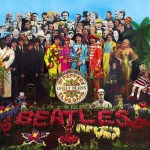 |
| Happy birthday Ronnie Wood! Ronald David “Ronnie” Wood (born 1 June 1947) is an English rock guitarist and bassist best known as a former member of The Jeff Beck Group, Faces, and a member of The Rolling Stones since 1975. He also plays lap and pedal steel guitar. |  |
| “You Send Me” is a song by American singer-songwriter Sam Cooke, recorded June 1, 1957 and released on September 7, 1957 by Keen Records. Produced by Bumps Blackwell and arranged and conducted by René Hall, the song was the A-side to “Summertime”. The song, Cooke’s debut single, was a massive commercial success, becoming a number one hit on both Billboard‘s Rhythm & Blues Records chart and the Billboard Hot 100.
It was named as one of the 500 most important rock and roll recordings by the Rock & Roll Hall of Fame. In 2005, the song was voted #115 by representatives of the music industry and press in Rolling Stonemagazine’s The 500 Greatest Songs of All Time. |
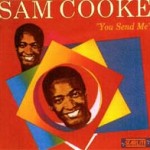 |
|
“Still Life” (American Concert 1981) is a live album by The Rolling Stones, released June 1, 1982. Recorded during the band’s American Tour 1981 in the latter portion of that year, it was released in time for their European Tour 1982 continuation the following summer. The album cover is a painting by Japanese artist Kazuhide Yamazaki, whose work inspired the tour’s stage design. |
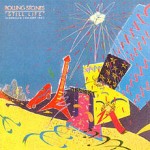 |
| “Give Peace a Chance” is a song written by John Lennon (originally credited Lennon–McCartney), and performed with Yoko Ono in Montreal, Canada.Released as a single in 1969 (recorded June 1, 1969) by the Plastic Ono Band onApple Records (catalogue Apple 13 in the United Kingdom, Apple 1809 in the United States), it is the first solo single issued by Lennon, released when he was still a member of the Beatles, and became ananthem of the American anti-war movement during the 1970s. It peaked at number 14 on the Billboard Hot 100 and number 2 on the British singles chart. | 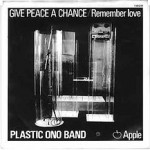 |
Pink Floyd started recorded their classic album Dark Side of the Moon June 1, 1972 (the first track to be recorded was “Us and Them”)The album was recorded at Abbey Road Studios, in two sessions, between May 1972 and January 1973. The band were assigned staff engineer Alan Parsons, who had worked as assistant tape operator on Atom Heart Mother, and who had also gained experience as a recording engineer on The Beatles‘ Abbey Road and Let It Be. The recording sessions made use of some of the most advanced studio techniques of the time; the studio was capable of 16-track mixes, which offered a greater degree of flexibility than the eight- or four-track mixes they had previously used, although the band often used so many tracks that to make more space available second-generation copies were made |
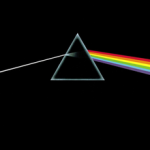 |
| John Lee Curtis “Sonny Boy” Williamson (March 30, 1914 – June 1, 1948) was an American blues harmonica player and singer, and the first to use the name Sonny Boy Williamson.Williamson was born near Jackson, Tennessee in 1914.His original recordings were considered to be in the country blues style, but he soon demonstrated skill at making harmonica a lead instrument for the blues, and popularized it for the first time in a more urban blues setting. He has been called “the father of modern blues harp”. While in his teens he joined Yank Rachell and Sleepy John Estes playing with them in Tennessee and Arkansas, and in 1934 settled in Chicago
|
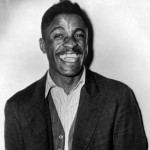 |
Spotify Playlist – June 1: |
|
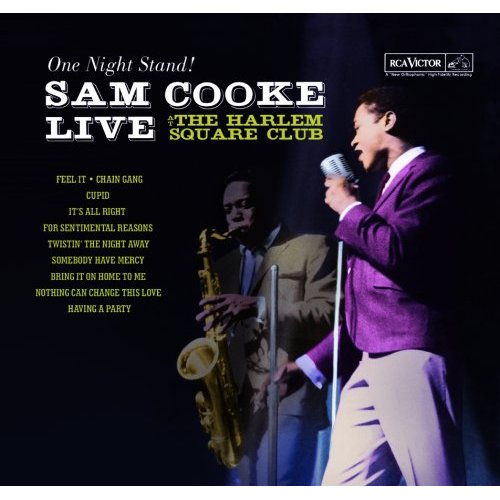
Sam Cooke was one the first to blend gospel music and secular music, the early foundation of soul music. He was the opposite of Elvis: He was a black performer who appealed to a white audience, who wrote his own songs and who controlled his own business.
On Jan. 12, 1963, Sam Cooke was not playing to the white audiences who knew him only from his earlier records. He was headlining a few concerts at Miami’s Harlem Square Club, he performed for black audiences who appreciated his roots and expected a grittier, more soulful Sam Cooke, which isexcactly what they got! It is indeed a rougher, rawer and more immediate side of Sam Cooke on display. Sam Cooke’s smooth voice sets the tone but it’s his abillities as an entertainer in world class form that take it to the top.

Cooke was energized by a recent tour of Europe with former labelmate Little Richard, when he took the stage at the Harlem Square Club in Miami. He gave us an electrifying set of sweaty, sanctified, manic and masterful soul music. The show was taped for an album which sat on the shelf for twenty years until it was released in 1985.
It is a fantastic recording and maybe it shows us what direction Mr. Cooke could have gone. But instead he got an eighteen month period which would see his baby son die, see the recording of some of his finest music, and then his all too early death.
One night stand! Live At The Harlem Square Club is one of the finest live releases I know of, worthy of standing next to James Brown’s landmark Apollo Theater date (recorded just a month earlier) and also worthy of the 23rd place on my list of the 30 best live albums.

It is one of the great moments in the history of soul music, heck, any kind of music!
Rolling Stone Magazine ranked it at 443 on their 500 Greatest Albums of All Time:
Cooke was elegance personified, but he works this Florida club until it’s hotter than hell, while sounding like he never breaks a sweat. He croons “For Sentimental Reasons” like a superlover, and when the crowd sings along with him, it’s magic.
Peter Guralnick (in his book Dream Boogie: The Triumph of Sam Cooke):
There was nothing soft, measured or polite about the Sam Cooke you saw at the Harlem Square Club; there was none of the self-effacing, mannerable, ‘fair-haired little colored boy’ that the white man was always looking for. This was Sam Cooke undisguised, charmingly self-assured, “he had his crowd,” said [guitarist] Clif White approvingly – he was as proud as he has been raised to be, not about to take any scraps from the white man’s table.
For me the difference from his studio work and this live album is clearest on Chain Gang. Listen to the two songs from the two minute mark, strike that, listen to the whole song. Both versions are great but the live version is raw, fantastic distillation of Soul! The way he switches from smooth, velvety voice into a gritty rasp, it is amazing, what an “instrument” he had.
Chain Gang:
All the songs are darker, more raw, more sexual. Cooke is twisting the audience around his finger and he sounds like a man who has earthly desires to attend to. It is raw soul, and I never thought I should say that about Sam Cooke!
Continue reading 30 Best live albums countdown: 23 – One night stand Live at the Harlem Square Club 1963 by Sam Cooke
A mind is like a parachute. It doesn’t work if it is not
open.
~Frank ZappaMy best advice to anyone who wants to raise a happy, mentally healthy child is: Keep him or her as far away from a church as you can.
~Frank Zappa….although he led groups that could be called rock & roll bands for much of his career, he used them to create a hybrid style that bordered on jazz and complicated, modern serious music, sometimes inducing orchestras to play along. As if his music were not challenging enough, he overlay it with highly satirical and sometimes abstractly humorous lyrics and song titles that marked him as coming out of a provocative literary tradition that included Beat poets like Allen Ginsberg and edgy comedians like Lenny Bruce.
~William Ruhlmann (allmusic.com)
From January 12, 1995, Lou Reed inducts Frank Zappa into the Rock and Roll Hall Of Fame:
Clip from the “Baby Snakes” DVD:
(1977 Halloween concert at New York City’s Palladium Theater)

Frank Vincent Zappa (December 21, 1940 – December 4, 1993) was an American composer, singer-songwriter, guitarist, recording engineer, record producer and film director. In a career spanning more than 30 years, Zappa wrote rock, jazz, orchestral and musique concrète works. He also directed feature-length films and music videos, and designed album covers. Zappa produced almost all of the more than 60 albums he released with the band The Mothers of Invention and as a solo artist. While in his teens, he acquired a taste for 20th-century classical composers such as Edgard Varèse, Igor Stravinsky, and Anton Webern along with 1950s rhythm and blues music. He began writing classical music in high school, while at the same time playing drums in rhythm and blues bands; he later switched to electric guitar.
Muffin Man – Live 1977:
Zappa was a self-taught composer and performer, and his diverse musical influences led him to create music that was often difficult to categorize. His 1966 debut album with the Mothers of Invention, Freak Out!, combined songs in conventional rock and roll format with collective improvisations and studio-generated sound collages. His later albums shared this eclectic and experimental approach, irrespective of whether the fundamental format was rock, jazz or classical. His lyrics—often humorously—reflected his iconoclastic view of established social and political processes, structures and movements. He was a strident critic of mainstream education andorganized religion, and a forthright and passionate advocate for freedom of speech, self-education, political participation and the abolition of censorship.
One of Frank’s last interviews, conducted by NBC’s Jamie Gangel for the Today Show (1993):
He was a highly productive and prolific artist and gained widespread critical acclaim. He had some commercial success, particularly in Europe, and for most of his career was able to work as an independent artist. He also remains a major influence on musicians and composers. Zappa was posthumously inducted into the Rock and Roll Hall of Fame in 1995 and received the Grammy Lifetime Achievement Award in 1997. Zappa was married to Kathryn J. “Kay” Sherman from 1960 to 1964. In 1967, he married Adelaide Gail Sloatman, with whom he remained until his death from prostate cancer in 1993. They had four children: Moon Unit, Dweezil, Ahmet Emuukha Rodan and Diva Thin Muffin Pigeen.
Hot Rats (1969):
Continue reading Today: The late Frank Zappa was born in 1940 – 72 years ago